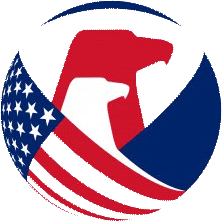Full-Size Baby Cribs
The regulation seeks to prevent the risk of deaths and injuries from falls or entrapment due to parts failure, dislodgment, or poor maintenance or assembly of the crib.
The regulation was originally published at 75 FR 81766 and codified at 16 C.F.R. part 1219. The regulation incorporates by reference ASTM F1169, and 16 C.F.R. § 1219.2 identifies the latest Commission-accepted version of ASTM F1169 that is mandatory as well as any potential modifications.
Read-only copies of ASTM standards that are incorporated by reference can be viewed at ASTM’s electronic Reading Room.
A full-size crib is a bed that meets all of the following criteria:
- Designed to provide sleeping accommodations for an infant
- Intended for use in the home, in a child care facility, in a family child care home, or in places of public accommodation affecting commerce
- Has interior dimensions of 28 ± 5/8 inches (71 ± 1.6 centimeters) in width x 52 3/8 ± 5/8 inches (133 ± 1.6 centimeters) in length
Cribs that are medical devices, as determined by the U.S. Food and Drug Administration, are not subject to the CPSC's full-size crib standard.
To prevent head entrapment and suffocation between the mattress and crib sides, a mattress used in a full-size crib must be at least 27 ¼ inches x 51 ¼ inches, with a thickness not exceeding 6 inches. The assembly instructions, the retail carton for the crib, and the crib itself must contain a specific warning statement that notes these dimensions.
Crib mattresses are not covered by the full-size baby crib regulation. However, crib mattresses are subject to the mattress flammability testing requirements of 16 C.F.R. parts 1632 and 1633.
Crib mattresses are also subject to a separate regulation at 16 C.F.R. part 1241. For more information, visit our crib mattresses business guidance page.
The requirements for full-size baby cribs per ASTM F1169 are as follows:
- General requirements
- Wood parts
- Surface coatings – see also our lead in paint business guidance page
- Small parts – see also our small parts business guidance page
- Corner posts
- Slat construction
- Crib side configuration
- Dimensions
- Spacing of crib components
- Toe holds
- Hardware and fasteners
- Toys – any toy accessories must meet the applicable requirements for children’s toys
- Recordkeeping
- Sharp points and edges – see also 16 C.F.R. §§ 1500.3(b)(4)(i)(D) and 1500.3(b)(15)(i)(A)
- Flammable solids
- Openings
- Scissoring, shearing, and pinching
- Labeling
- Cord/strap length
- Cribs that fold for storage or transport
- Performance requirements
- Plastic teething rail test requirement
- Cycle testing
- Crib side latch test requirements
- Mattress support system vertical impact test
- Mattress support system test requirements
- Crib side test requirements
- Spindle/slat strength testing
- Cutouts
- Entrapment in accessories
- Mattress support system openings
For details on the individual requirements, firms should review the latest Commission-accepted version of ASTM F1169 as referenced at 16 C.F.R. § 1219.2. Read-only copies of ASTM standards that are incorporated by reference can be viewed at ASTM’s electronic Reading Room.
The CPSC strongly encourages resellers to search the online Recall List to ensure cribs for resale were not part of an earlier recall.
For cribs manufactured before June 28, 2011, retailers should destroy any full-size crib (with or without drop sides) and should not resell it unless the seller has written proof that the crib meets the applicable requirements. For cribs manufactured after June 28, 2011, resellers should assemble and make sure that the cribs have all component parts, including all screws and hardware. You can find out more information on this and other resale topics by visiting our resellers guidance page.
Yes. There are general requirements for child care articles and durable infant or toddler products that apply:
- Small parts: Products intended for children under 3 years of age must not contain small parts or liberate small parts after use and abuse testing.
- Lead in paint and similar surface coatings: Children’s products must not bear paint and/or similar surface coatings that contain more than 0.009 percent (90 ppm) lead.
- Total lead content: Children’s products must not contain greater than 100 ppm (0.01 percent) of total lead content in any accessible component part.
- Phthalates: Children’s toys and child care articles as defined per 16 C.F.R. § 1307.2 must not contain greater than 0.1 percent (1000 ppm) of any regulated phthalate in any accessible plasticized component part.
- Third-party testing: Children’s products must be tested for compliance to applicable safety rules by a third-party, CPSC-accepted laboratory.
- Certification: Domestic manufacturers or importers of children’s products must generate a Children’s Product Certificate (CPC) certifying compliance with the applicable safety rules and ensures that a CPC accompanies the distribution of the product.
- Labeling: Children’s products must bear distinguishing, permanent marks on the product and any packaging (tracking label) that allow consumers to ascertain certain information. Durable infant or toddler products are required to have product markings in addition to the tracking label. This chart summarizes the specific labeling and registration requirements that durable infant and toddler products must meet.
- Registration form: Durable infant or toddler products must have a product registration form (also known as registration card) permanently attached to the product. There must also be an option to register via a website or, in the absence of a website, via email.

